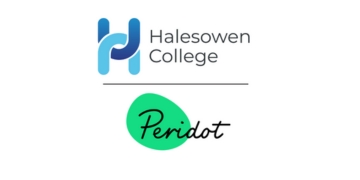Few groups in England’s education system attract as much political and media attention as low-income white children (LIWC). It is easy to dismiss all this as political grandstanding, but the data shows there is a real problem here.
My new research adds a new, more fundamental dimension to a discussion that until now has centred on exam results by looking at how engaged LIWC pupils are with school in the first place.
Drawing on data from more than 100 secondary schools and 70,000 pupils through The Engagement Platform, the answer is stark: LIWC pupils are consistently the least engaged across nearly every measure and often start secondary school on the back foot.
Educational outcomes are not only about ability or teaching quality. They are also about how much pupils value school (cognitive engagement), how much effort they put in (behavioural engagement), and whether they enjoy being there (emotional engagement).
High levels of all three types of engagement are linked to faster rates of academic progress and better attendance. Conversely, low levels are early warning signs of underperformance.
What our data shows is that LIWC children report among the lowest levels of engagement across all three.
Cognitive engagement
LIWC children have the weakest sense of academic agency. Around one-quarter (26 per cent) of LIWC secondary pupils do not believe that putting in more effort leads to better grades.
Low-income white girls fare particularly poorly here, reporting the lowest interest in lessons of any group. They award an average score of 4.4 out of 10, compared to 5.0 for white girls not from low-income backgrounds and 5.2 for low-income Asian boys.
Emotional engagement
Among this group, enjoyment of school is alarmingly low. LIWC pupils score just 2.6 out of 10, compared with 3.7 for disadvantaged Asian pupils and 3.4 for disadvantaged Black pupils.
Girls again stand out as the most disaffected. LIWC girls award an average school enjoyment score of 2.4 out of 10, compared to 2.8 for LIWC boys and 3.0 for white girls that are not from low-income backgrounds.
Behavioural engagement.
Sadly, but perhaps unsurprisingly given the above, effort is especially concerning. Only half of LIWC pupils say they work hard at school, compared to around 70 per cent of disadvantaged South Asian pupils.
Homework is a major issue: LIWC pupils are far less likely to hand it in on time.
Another striking finding relates to timing. While many groups show a big drop in engagement during Year 7, LIWC pupils begin secondary school already behind. The problem is not that they disengage faster, but that they start secondary school less engaged to begin with.
The disadvantage penalty
Our data suggests that disadvantage and ethnicity are additive rather than multiplicative. In other words, being disadvantaged lowers engagement, and being white lowers engagement, but these factors combine rather than amplify one another.
One exception seems to be effort at school: here, the ‘disadvantage penalty’ is much sharper for white pupils than for their Black or South Asian peers.
Recommendations
If we want to improve outcomes for LIWC pupils, we must focus on three priorities:
Start early
Since LIWC pupils arrive in Year 7 already disengaged, interventions need to begin in primary and continue through the secondary transition.
Tailor strategies by gender
LIWC boys are most likely to undervalue education and put in little effort. For them, initiatives that link schoolwork to concrete goals and future opportunities could be key.
LIWC girls, by contrast, suffer from low agency and low enjoyment. For them, building confidence, peer networks and positive experiences of school life may be more effective.
Work with parents
Many ethnic minority families instil high aspirations despite disadvantage. Schools and policymakers need to find ways to encourage similar parental engagement among LIWC families, so children receive consistent messages about the value of education.
Engagement is far from perfect for other disadvantaged groups, and our data offers lessons for better supporting them too.
But when it comes to LIWC, boosting life opportunities will remain elusive until we address what is evidently a deep issue of early disengagement across the board.
Read the full research here












Your thoughts